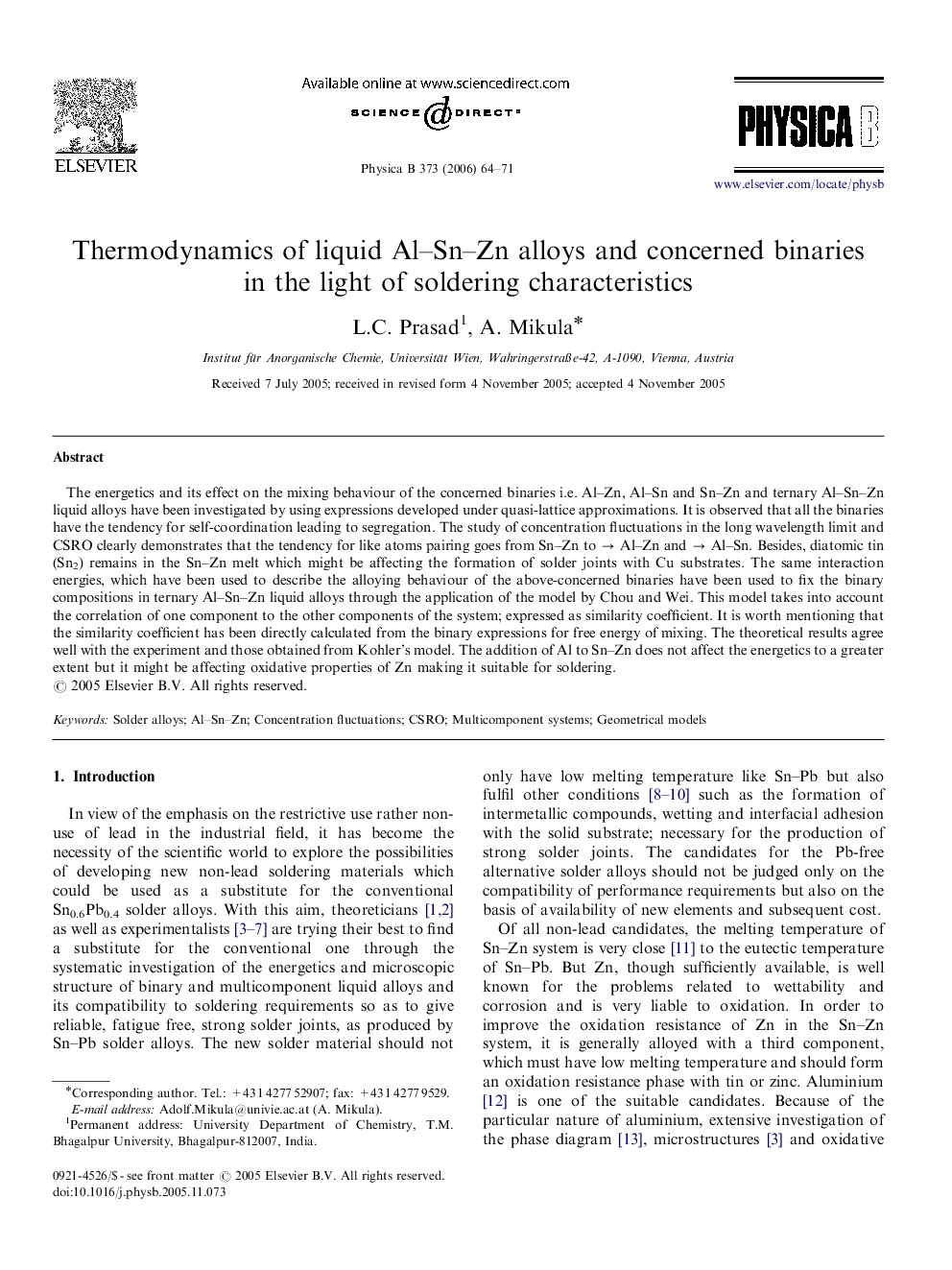| Article ID | Journal | Published Year | Pages | File Type |
|---|---|---|---|---|
| 1816289 | Physica B: Condensed Matter | 2006 | 8 Pages |
The energetics and its effect on the mixing behaviour of the concerned binaries i.e. Al–Zn, Al–Sn and Sn–Zn and ternary Al–Sn–Zn liquid alloys have been investigated by using expressions developed under quasi-lattice approximations. It is observed that all the binaries have the tendency for self-coordination leading to segregation. The study of concentration fluctuations in the long wavelength limit and CSRO clearly demonstrates that the tendency for like atoms pairing goes from Sn–Zn to → Al–Zn and → Al–Sn. Besides, diatomic tin (Sn2) remains in the Sn–Zn melt which might be affecting the formation of solder joints with Cu substrates. The same interaction energies, which have been used to describe the alloying behaviour of the above-concerned binaries have been used to fix the binary compositions in ternary Al–Sn–Zn liquid alloys through the application of the model by Chou and Wei. This model takes into account the correlation of one component to the other components of the system; expressed as similarity coefficient. It is worth mentioning that the similarity coefficient has been directly calculated from the binary expressions for free energy of mixing. The theoretical results agree well with the experiment and those obtained from Kohler's model. The addition of Al to Sn–Zn does not affect the energetics to a greater extent but it might be affecting oxidative properties of Zn making it suitable for soldering.
